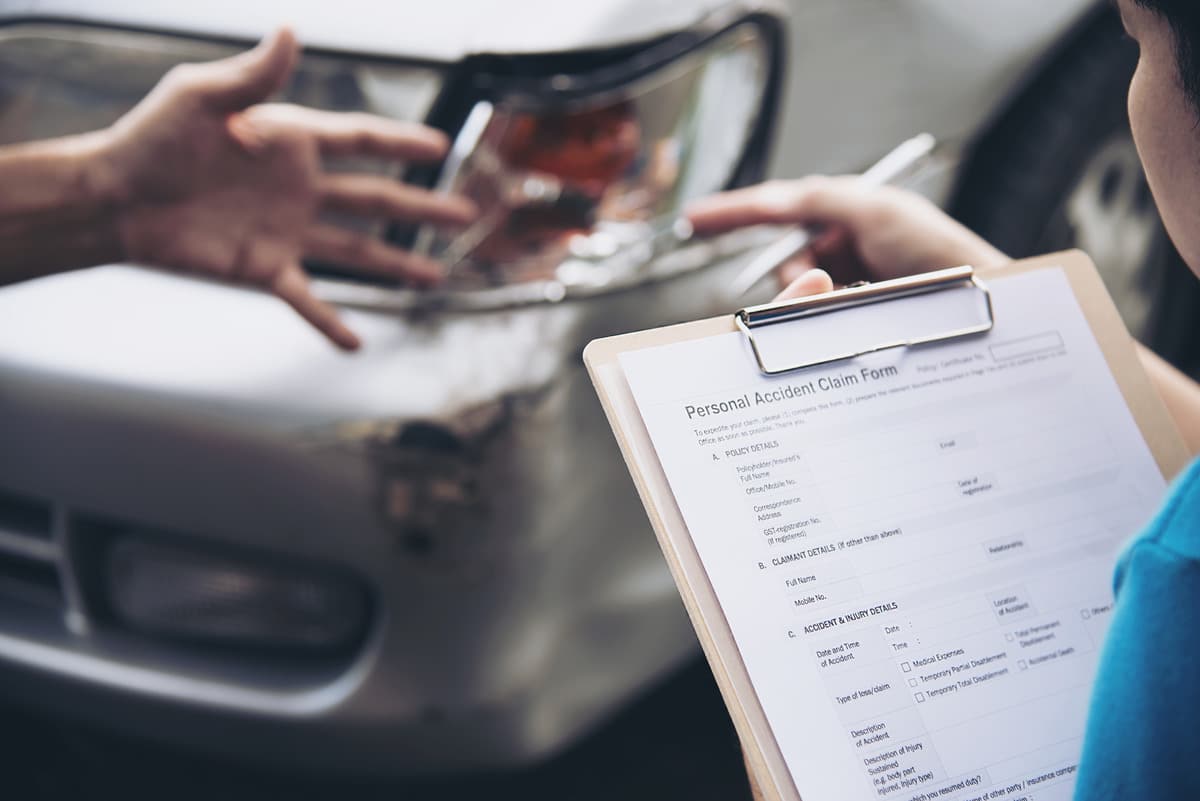The Role of Insurance Coverage in Car Accident Claims
Table of Contents
- Understanding Insurance Coverage in Car Accidents
- Types of Insurance That Can Affect Your Claim
- Common Challenges Victims Face with Insurance Providers
- Real-World Scenarios: How Insurance Coverage Affects Different Types of Accidents
- What Happens During the Claims Process?
- How a Lawyer Can Help You Maximize Your Claim
- Call to Action – Contact Roxell Richards Injury Law Firm
1. Understanding Insurance Coverage in Car Accidents
Car accidents can turn your life upside down in an instant. From physical injuries to emotional trauma, the aftermath is often overwhelming. Yet amid the chaos, one crucial factor determines how quickly and how fairly you recover: insurance coverage.
Why Insurance Matters After an Accident
Insurance is supposed to act as a safety net, helping victims recover financially after a crash. But many people quickly learn that accessing compensation isn’t always straightforward. Even if the other driver was clearly at fault, that doesn’t guarantee you’ll be reimbursed fully or quickly. Why? Because insurance companies are not on your side they’re in the business of protecting their bottom line.
When an accident happens, you’re suddenly facing:
-
- Property Damage: Your car may be totaled or require extensive repairs. If you’re not adequately insured, you might be left covering these costs out of pocket.
- Medical Bills: Medical expenses can skyrocket from emergency room visits to physical therapy. Even with health insurance, copays, deductibles, and uncovered treatments can be financially devastating.
- Lost Wages: If your injuries prevent you from working, you may lose days, weeks, or even months of income.
- Pain and Suffering: These are the non-economic damages the accident’s emotional, psychological, and lifestyle impacts. They’re accurate and significant, but not always compensated without legal action.
The Misconception of Fault
A common misunderstanding is that the insurance company will automatically take care of everything if you weren’t at fault. In reality, insurance companies yours and the other driver’s often try to avoid full payouts by:
-
- Arguing about who was responsible
- Claiming your injuries were pre-existing.
- Offering lowball settlements before you’ve had time to assess the full impact
That’s why understanding your policy is as important as knowing your legal rights. For example, having uninsured/underinsured motorist (UM/UIM) coverage, personal injury protection (PIP), or medical payments coverage (MedPay) can make a huge difference in how quickly you can pay for care or repair your vehicle, especially when the at-fault party doesn’t have enough insurance.
Navigating the Maze
Without proper guidance, navigating insurance policies, claim forms, adjuster statements, and medical records can feel like a second job at a time when you’re injured, stressed, and trying to heal. That’s why it’s critical to understand:
-
- What types of coverage are available
- What does your current policy include
- How to deal with insurance adjusters
- When to involve a personal injury attorney
2. Types of Insurance That Can Affect Your Claim
Liability Insurance
This is mandatory in most states, including Texas. It covers injuries and damages you cause to others when you’re at fault. But once those policy limits are reached, you’re personally on the hook.
Collision Insurance
Covers damage to your vehicle, regardless of fault. Even if someone else is responsible and their insurance is dragging their feet, you can get your repairs done quickly through your collision policy.
Comprehensive Insurance
This handles things outside your control, like theft, fires, and weather events. It won’t help with personal injuries, but it’s valuable for replacing a totaled car caused by a storm or vandalism.
Personal Injury Protection (PIP)

Required in some states and optional in Texas, PIP pays for your medical expenses, lost income, and even funeral costs. It kicks in regardless of fault, which makes it useful for fast access to funds.
Uninsured/Underinsured Motorist Coverage (UM/UIM)
If the other driver has insufficient insurance, UM/UIM ensures you’re not stuck footing the bill. In Texas, this coverage can save you from financial disaster in a hit-and-run or if an uninsured driver hits you.
Medical Payments Coverage (MedPay)
3. Common Challenges Victims Face with Insurance Providers
Claimants often run into serious issues even with clear documentation and solid coverage. These include:
Delays
Carriers may delay decisions to pressure you into accepting a lower offer.
Denying Liability
Insurance companies may dispute liability to avoid payouts even when the facts point clearly to one driver.
Downplaying Injuries
Insurers frequently argue that:
-
- You’re exaggerating symptoms
- Injuries were pre-existing
- Medical treatments were unnecessary
Lowball Offers
Initial settlement offers often cover only a fraction of medical costs and none of your pain and suffering.
Bad Faith Practices

-
- Ignoring claims
- Failing to investigate
- Misrepresenting coverage
4. Real-World Scenarios: How Insurance Coverage Affects Different Types of Accidents
Scenario 1: Hit-and-Run Driver
You’re rear-ended, and the other car speeds off. With no way to identify them, you file through:
-
- Your UM coverage for injuries
- Collision coverage for your car repairs
Without UM, you’re on the hook for all costs.
Scenario 2: At-Fault Driver Has Minimum Coverage
You’re hit and suffer $100,000 in medical bills. The at-fault driver only carries 30/60/25 coverage. That leaves:
-
- $70,000 uncovered
- Your UIM coverage bridges the gap
You must pursue a lawsuit for the remainder if you don’t have UIM.
Scenario 3: Passenger in Someone Else’s Car
The driver runs a red light, causing an accident. You can:
-
- File against the driver’s liability coverage
- Use your own PIP or health insurance
- Use MedPay if available
Scenario 4: Rollover Caused by Road Conditions
You swerve to avoid debris and flip your car. No other driver is involved. You’ll likely:
-
- Use your collision insurance for vehicle repairs
- Rely on PIP or MedPay for injuries
5. What Happens During the Claims Process?
Let’s break this down step-by-step:
1. Report the Accident
Notify your insurance company and police as soon as possible.
2. Investigation Begins
Insurance adjusters investigate the cause, damages, and who’s at fault.
3. Claim Review
Medical records, repair estimates, and any lost income data are reviewed.
4. Settlement Negotiation
The insurer may make an offer, but don’t accept without legal advice.
5. Litigation (If Needed)
6. How a Lawyer Can Help You Maximize Your Claim
Legal representation is especially valuable when:
-
- You’re seriously injured
- Fault is disputed
- Damages are significant
- The insurer acts in bad faith
At Roxell Richards Injury Law Firm, we:
-
- Examine all insurance policies involved
- Prove fault and damages
- Handle communication with insurers
- File lawsuits if insurers delay or deny rightful compensation
📣 Call to Action – Contact Roxell Richards Injury Law Firm
Navigating insurance coverage of car accident claims is complex it’s stacked against victims from the beginning. Insurance companies have teams of lawyers, adjusters, and investigators working to protect their interests. So ask yourself this: Who’s protecting yours?
If you’ve been injured in a car accident whether it was a fender-bender or a life-altering crash you’re already facing enough stress. Medical bills are piling up. Your car may be undrivable. You could be out of work. And worst of all, the insurance company is either delaying, denying, or lowballing your claim.
That’s where we come in.
At Roxell Richards Injury Law Firm, we ensure you’re not taken advantage of during one of the most vulnerable times of your life. With years of experience helping Texas victims handle insurance coverage car accident claims, we know how to fight and win.
Don’t Delay The Clock Is Ticking
Roxell Richards Injury Law Firm
Houston, TX z7057
Phone: (713) 974-0388
Fax: (713) 974-0003
Frequently Asked Questions
If another driver hits me and they have insufficient coverage, can my own insurance still protect me?
Yes — if you have appropriate coverage like uninsured/underinsured-motorist coverage or PIP/MedPay, your own policy may cover medical bills, vehicle damage, or other losses when the other driver’s insurance isn’t enough or they’re uninsured.
Can I get my car repaired even before the other driver’s liability insurance pays?
Yes — with collision coverage, you can have your vehicle repaired without waiting for the other driver’s insurer, which is often useful if the other party’s insurance is slow to respond.
What happens if the at-fault driver’s insurance limits aren’t enough to cover damages?
If damages exceed their policy limits, you may rely on your own uninsured/underinsured-motorist coverage (if you have it), or you may need to pursue a personal liability lawsuit against the at-fault driver.
Why do insurance companies sometimes deny or delay claims even when coverage exists?
Insurers may dispute liability, downplay injuries, argue pre-existing conditions, or delay processing to pressure claimants into accepting lower settlements.
What types of insurance coverage matter after a car accident?
Major relevant coverages include: liability insurance (for injuries and damage you cause), collision coverage (for your own vehicle damage), comprehensive coverage (for non-collision losses like theft or weather damage), and personal injury protection (PIP) or medical-payments coverage (for medical expenses and lost wages, regardless of fault).
